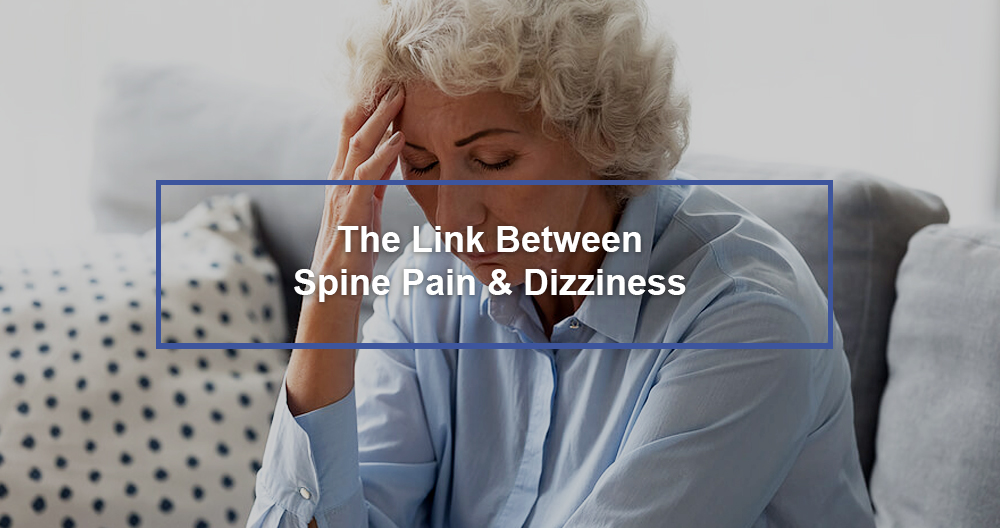The Link Between Spine Pain & Dizziness
What is Cervical Vertigo?
Vertigo, also known as severe dizziness or feeling like you are spinning in your body, is a medical term. It is possible for someone to feel that the world revolves around them. You may feel as though the world is spinning around you, even if you are standing still. Everyone who has experienced vertigo after spinning in circles has experienced it. The body spins even if they stop spinning.
Vertigo is often caused by an inner-ear problem or some other condition that can throw off the body’s center of balance. Cervical vertigo can be caused by a problem in the neck. Cervical Vertigo can be a sign that there is something more. People will experience dizziness when they are triggered by a turning of the head. This dizziness could last anywhere from a few seconds to several hours. There are several possible causes for cervical vertigo. Many of these are related to long-term, chronic injuries or trauma to the neck.
Although the diagnosis is not always clear-cut, it remains controversial. The journal Archives of PhysiotherapyTrusted Source found that doctors are not able fully to determine the cause of symptoms, making it difficult to accurately diagnose the condition. Cervical vertigo is not a recognized condition. Therefore, doctors often test for other causes and remove them.
A recent study in the journal Laryngoscope Investigative OtolaryngologyTrusted Source found that people with cervical vertigo may appear to doctors as people with migraine who also have neck injuries, and 94% of people with cervical vertigo report having neck pain. The neck’s muscles, nerves, joints, and nerves send signals to the lower brain, inner ear, and other parts of the body, including signals regarding the body’s orientation. This is part of the body’s efforts to keep balanced and coordinated.
What are the signs and symptoms of cervicogenic dizziness
Cervicogenic dizziness is not just about dizziness. Some other symptoms include:
- Disequilibrium refers to the feeling of falling when one is standing or walking.
- The sensation of swimming is almost like having a body massage
- Napalm pain in the neck can cause sleeping problems
- Neck pain can lead to posture problems
- Tinnitus (wringing or ringing in the ears) and hearing loss
- Nausea
- Headaches
- Stiffness of neck
- Shoulder pain
Whiplash Injury
A whiplash injury can be caused by neck whipping. Rear-end auto collisions are the most common cause of whiplash. Whiplash is most commonly experienced as neck pain. However, there are other symptoms such as dizziness and vertigo.
If whiplash causes dizziness, it may be due to brain injury (concussion) that occurred during the collision. One possibility is that the neck’s muscles and/or joints are damaged by proprioceptors.
Receptors are thought to be present in the muscles and joints within your neck that transmit messages to the brain. These receptors are thought to provide feedback on the position and movement of the neck, head, and neck. In maintaining balance, the proprioceptors of the neck play an important role. Feeling dizzy or unsteady may result from injury to these preceptors.
Vertebrobasilar Insufficiency
VBI is a condition where one or more vertebral blood vessels becomes clogged within the cervical spine. VBI means that blood is not reaching the brain, inner ear or brainstem in sufficient amounts. If this happens, severe symptoms like dizziness can result. Bow Hunter’s Syndrome is one type of VBI. It causes temporary dizziness, or other symptoms when the head turns to the side (a bow hunter might). Although this type of compression can be rare, it occurs most often between the C1 vertebrae and C2 vertebrae.
Myofascial Pain Syndrome of the Cervical Spine
Myofascial Pain Syndrome is characterized by painful trigger points developing in the muscles and connective tissues. It is also known as cervical myofascial painful syndrome when the pain is most severe in the neck. You may feel tender trigger points, which can be caused by activity or touching, and muscles that become stiff and achy can result in pain spreading to your head or shoulders. It is not common for cervical myofascial painful syndrome to occur, but it is possible that around one-third of patients will also experience dizziness.
No known cause has been identified for cervical myofascial syndrome. Pre-existing injury, repetitive neck movements, poor posture, stress, and/or overuse are possible causes. It is not clear if there is a connection between neck pain, dizziness, and overuse or repetitive neck movements. However, some evidence suggests that treatment of myofascial discomfort syndromes (such as trigger point injections, physical therapy, medication) can reduce both pain and dizziness.
When is it best to visit a doctor?
Unexplained dizziness should be examined by a doctor if it persists or comes back. A qualified medical professional will perform a physical examination and run diagnostic tests to determine the source of neck pain or dizziness. A doctor can help narrow down possible causes of dizziness and recommend treatment options. Spinal injections or additional testing can help to clarify the cause and improve your quality-of-life. Seek medical attention immediately if neck pain and/or dizziness are associated with other troubling symptoms. Examples include severe nausea, persistent nausea, headaches, fevers or chills, weakness and numbness, as well as bowel/bladder dysfunction.
Prevention
As some causes (such as vehicle accidents) cannot be avoided, it is not possible to prevent cervical vertigo. You can help avoid other causes though. To keep your cervical discs from gaining weight, you can exercise the neck muscles to maintain strength and lower pressure. Sitting properly can help reduce pressure on the neck, prevent damage to delicate structures, and keep the head, shoulders, spine and head aligned. Regular stretching and massages of the neck or chiropractic alignments can be beneficial. You could also try warm compresses to help relax the neck.



